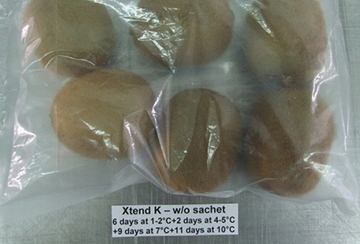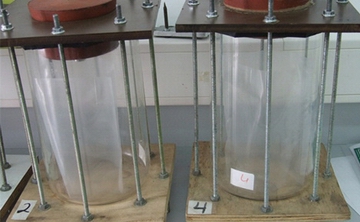
In one of the studies, three commercially available products and an experimental film were tested for their absorption capability in hermetically sealed cells. The volume of the cells was 3.5 litres and the initial concentration of ethylene was between 100-150 ppb. The surface of the films was 1,000 cm2. Using a septum, samples were taken at regular intervals in order to measure the concentration of ethylene. This was done under room temperature using a gas chromatograph. The reduction of the concentration after 24 hours of incubation was minimal. On the other hand, in commercially available packages of ethylene-absorbing bags of 5 grams, on the basis of potassium permanganate, no trace of ethylene was found after 2 hours. A mere granule of potassium permanganate was enough to absorb all ethylene.

The investigations indicate that the absorption capabilities of the commercially available films are not effective. This result is consistent with that of researchers from Prominent UC Davis. As early as 1997, Suslow said that only the products with potassium permanganate are able to absorb ethylene in a closed environment. The studies were performed under both high and low humidity.





